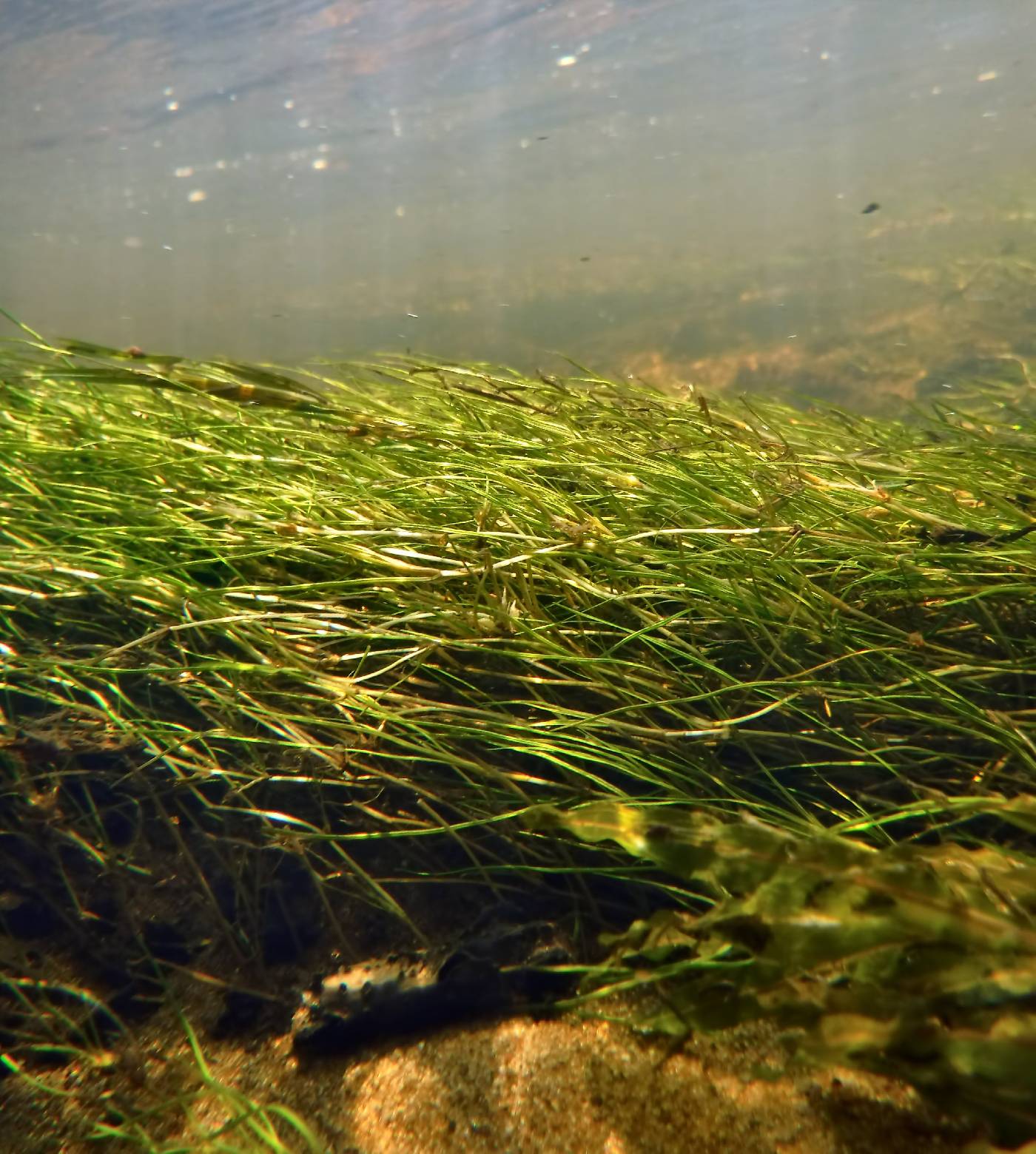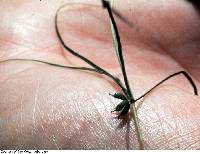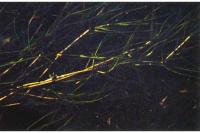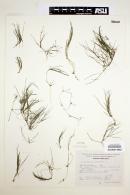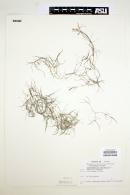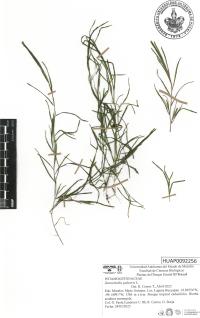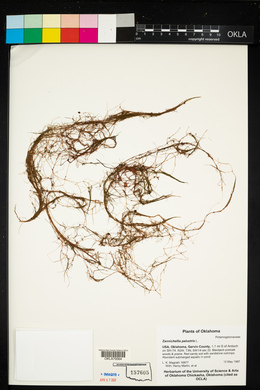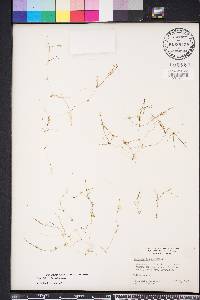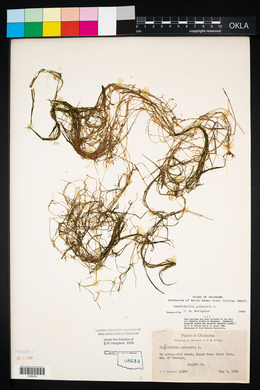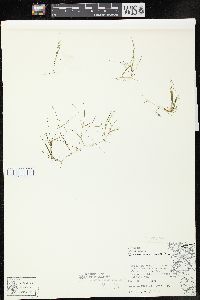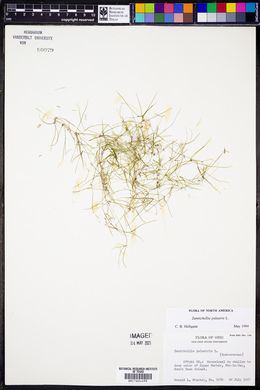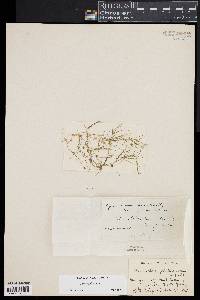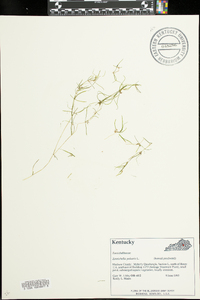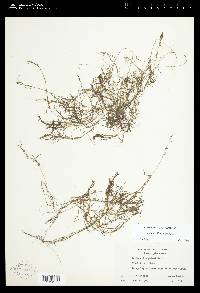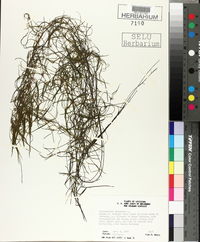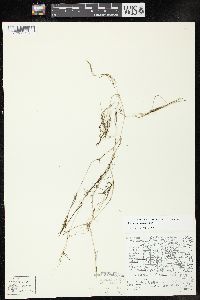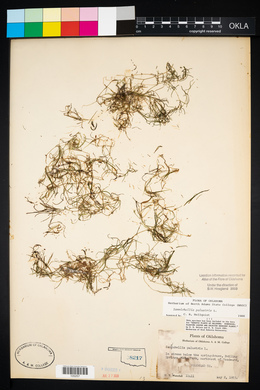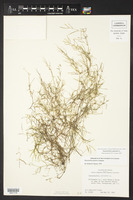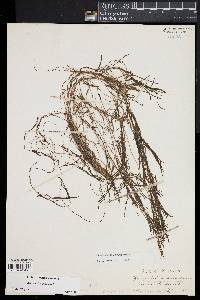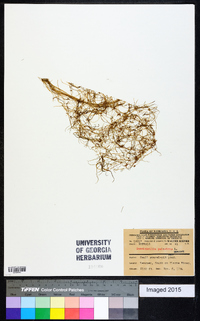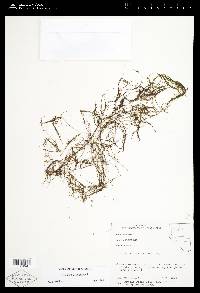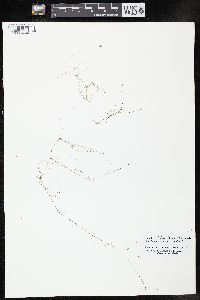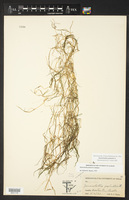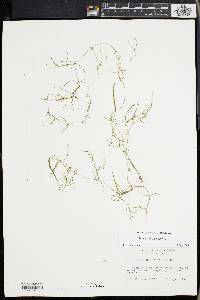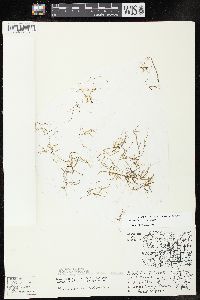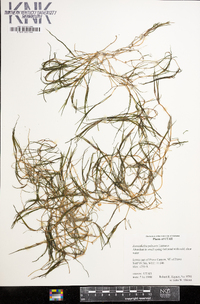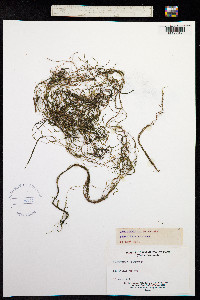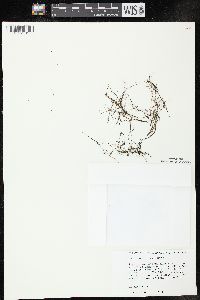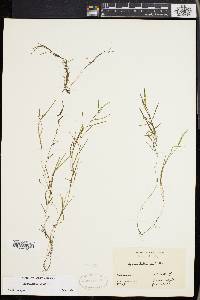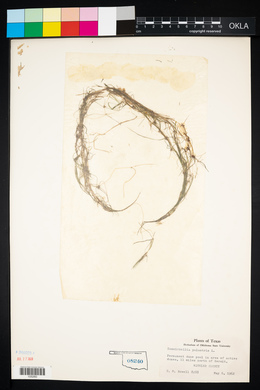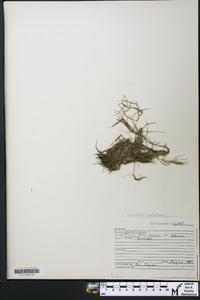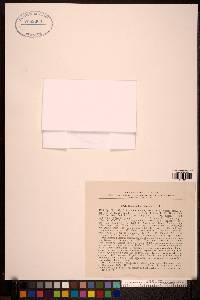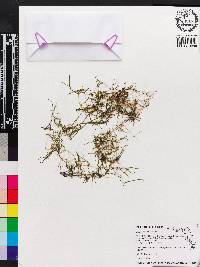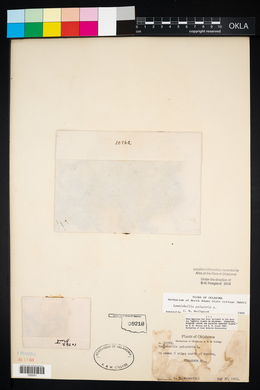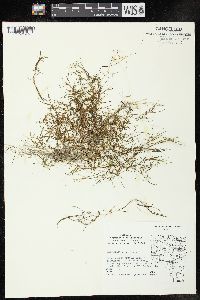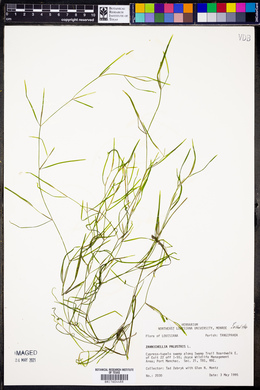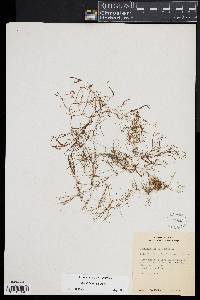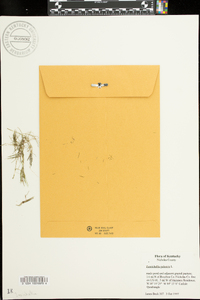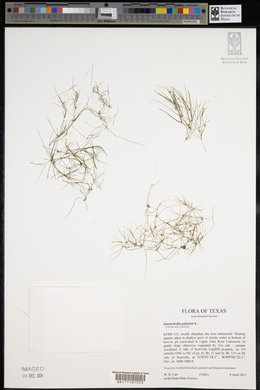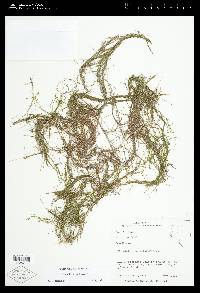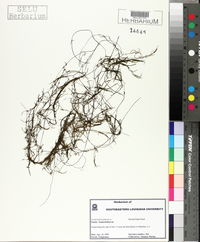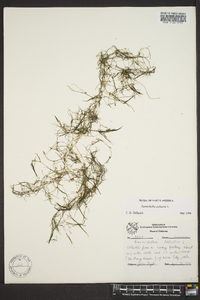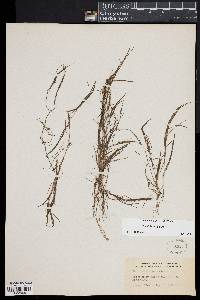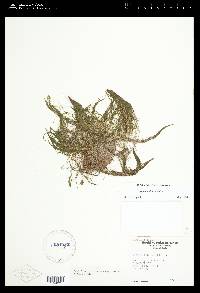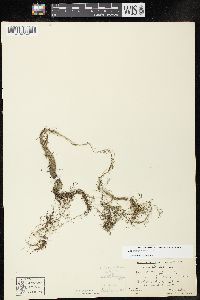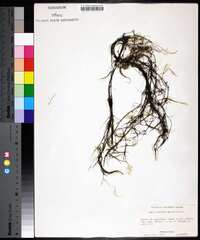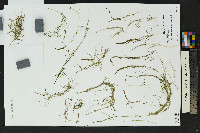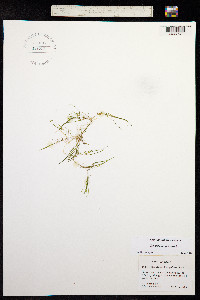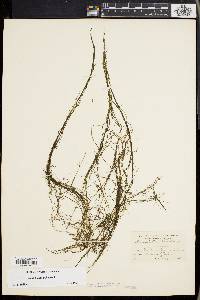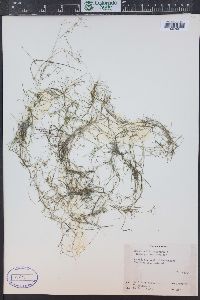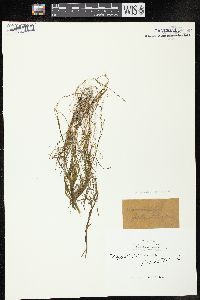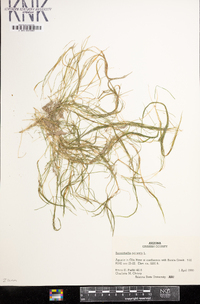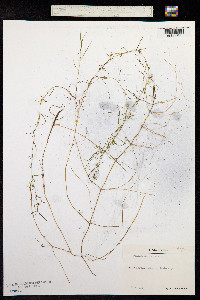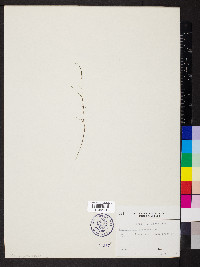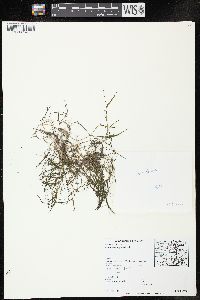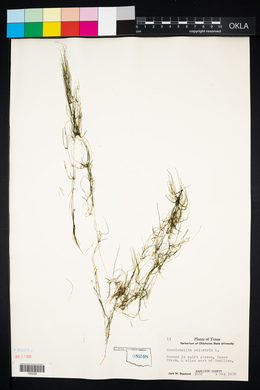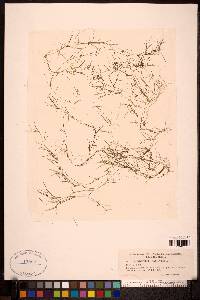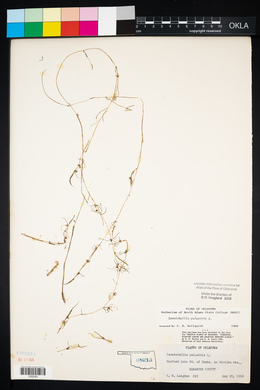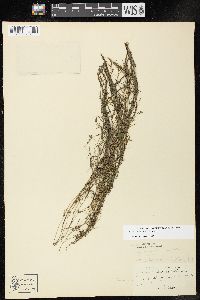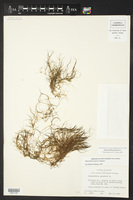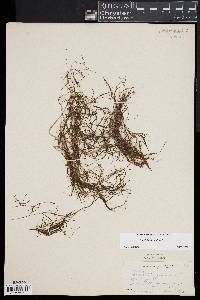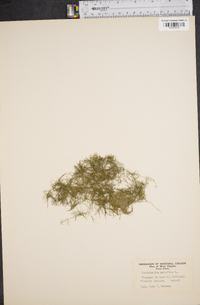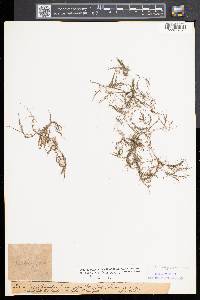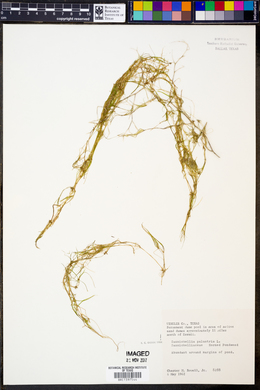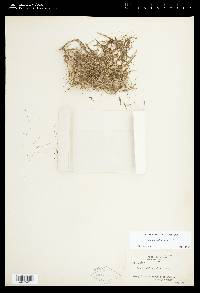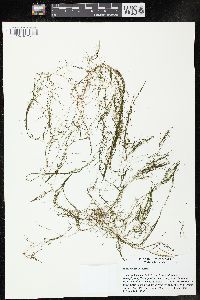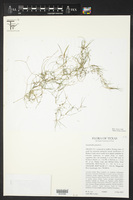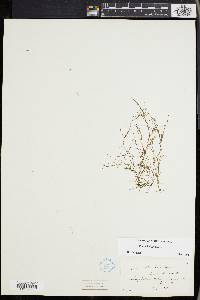Zannichellia palustris
|
|
|
|
Family: Potamogetonaceae
horned pondweed, more...Horned-Pondweed, horned poolmat
[Zannichellia major (Hartm.) Boenn. ex Reichenb., moreZannichellia palustris var. major Hartm., Zannichellia palustris var. muricata , Zannichellia palustris var. stenophylla Aschers. & Graebn., Zannichellia stylaris C. Presl] |
Herbs entirely submersed. Stems to 50 cm ´ 0.2----0.6 mm. Leaves 3.5--4.2 cm ´ 0.2--1 mm, apex acute. Staminate flowers: filament 1.5--2 mm, connective prolonged into blunt tip 0.1 mm. Pistillate flowers: pistils 4--5; style 0.4--0.7 mm. Fruits 1.7--2.8 ´ 0.6--0.9 mm; rostrum 0.7--2 mm; podogyne 0.1--1.5 mm; pedicel 0.3--1.2 mm. Flowering spring--summer. Brackish or fresh waters of streams, lakes, or estuaries; 0--2900 m; Alta., B.C., Man., N.B., Nfld. and Labr. (Nfld.), N.W.T., N.S., Ont., P.E.I., Que., Sask.; Ala., Alaska, Ariz., Ark., Calif., Colo., Conn., Del., D.C., Fla., Idaho, Ill., Ind., Iowa, Kans., Ky., La., Maine, Md., Mass., Mich., Minn., Miss., Mo., Mont., Nebr., Nev., N.H., N.J., N.Mex., N.Y., N.C., N.Dak., Ohio, Okla., Oreg., Pa., R.I., S.Dak., Tenn., Tex., Utah, Vt., Va., Wash., W.Va., Wis., Wyo.; Mexico; West Indies; Central America; South America; Eurasia; Africa; Australia. Outside of Europe most Zannichellia are considered to be Z. palustris (W. Van Vierssen 1982). In Europe three species have been recognized based on stamen length, fruit length, podogyne length, and the rostrum to fruit length ratio. For Z. palustris in Europe the mean rostrum length is 0.78 ± 0.20deletion} mm, the mean podogyne length is 0.4 ± 0.19 mm, and the rostrum to fruit ratio is less than 0.5 (W. Van Wierssen Vierssen 1982). North American Zannichellia does not match any of these figures exactly. In North America Zannichellia has been considered historically to comprise only one species, which has been called Z. palustris. Until further research determines the range of Zannichellia and species delimitations, we areI am continuing to consider all North American material to be monospecific and am are applying the name Z. palustris to our that material.
Perennial submersed aquatic herb to 0.5 m tall Stem: thin and leafy. Leaves: submersed, opposite, stalkless, 3 - 10 cm long, to 1 mm wide, linear with a pointed tip, nearly round in cross-section, one-veined to partly three-veined. Inflorescence: an axillary cluster of two flowers (one male, one female). Flowers: either male or female, borne on the same plant (monoecious), paired (one male, one female), short-stalked, greenish, tiny, lacking tepals. Stamens one. Anthers four-chambered. Pistils four to five. Fruit: an achene, two to four, short-stalked, 2 - 3 mm long (not including 1 mm long style), curved, keeled. Similar species: No information at this time. Flowering: late May to mid-August Habitat and ecology: Local in shallow, often calcareous waters. Occurence in the Chicago region: native Etymology: Zannichellia is named after the Venetian botanist and naturalist Giovanni Gerolamo Zannichelli (1662-1729). Palustris means "of marshes." Author: The Morton Arboretum Cronquist et al. 1977, FNA 2000, Heil et al. 2013, Martin and Hutchins 1980, Allred and Ivey 2012 Duration: Perennial Nativity: Native Lifeform: Forb/Herb General: Submersed aquatic annual herb (occasionally perennial); stems 30-50 cm long, filiform, light green but drying tan or brown; roots single or in pairs at stem nodes. Leaves: All leaves are submersed; with alternate, opposite or pseudo-whorled leaf arrangement, often all on same plant; blades filiform, 2-8 cm long, less than 0.5 mm wide. Flowers: Tiny and inconspicuous, in pairs at the leaf axils; each pair consists of one male and one female flower; male flower consists of a single stamen; female flower of 4 or 5 distinct, short-stipitate pistils. Fruits: Single-seeded drupaceous fruits that are obliquely oblong, flattened, 3-4 mm long, dentate on the back. Ecology: Found in streams and in still to slow moving water, even brackish water, from 5,000-9,000 ft in the Southwest; flowers May-November. Distribution: Found throughout the world; in every state in the US. Notes: Depending on the publication date of the text, look for this species under Zanichelliaceae, Potamogetonaceae, or Najadaceae. It is distinguished from other pond weeds based on the leaves being mostly opposite, filiform (thread-like), less than 1 mm diameter, and not clasping the stems at the base nor narrowed to a pedicel; and the flowers and fruits are sessile or on short pedicels only about 1mm long, in the leaf axils. Look for the small fruits, about 3 mm long in the leaf axils, which are asymmetrically oblong and tapered at the tip into a curved beak. There is one species of Zanichellia in North America, and it is found worldwide. Ethnobotany: Unknown Etymology: Zannichellia is named for Italian botanist Gian G. Zannichelli (1662-1729); palustris means growing in marshes. Synonyms: Zannichellia major, Z. palustris var. major, Z. palustris var. stenophylla Editor: SBuckley 2010, FSCoburn 2015, AHazelton 2017 Rhizome scarcely differentiated from the very slender and fragile leafy stem; lvs 3-10 cm נ0.5 mm, 1-nerved, or partly 3-nerved in robust plants; achenes keeled on both the outer and inner sides, the body 2-3 mm, the style 1 mm; 2n=24, 48, 32, 36. In fresh (often eutrophic) or brackish water almost throughout N. Amer., and widespread in the Old World. Gleason, Henry A. & Cronquist, Arthur J. 1991. Manual of vascular plants of northeastern United States and adjacent Canada. lxxv + 910 pp. ©The New York Botanical Garden. All rights reserved. Used by permission. From Flora of Indiana (1940) by Charles C. Deam I found this pondweed to be frequent in one foot of water on the southwest side of Cedar Lake, Lake County. I found it in Pulaski County about 13 miles west of Winamac, in Little Monon ditch where it is crossed by State Road 14. It has been reported from Wolf Lake, Lake County, by Peattie and from Vigo County by Blatchley. It may be more frequent in the state than our reports indicate. …… Indiana Coefficient of Conservatism: C = 6 Wetland Indicator Status: OBL |

